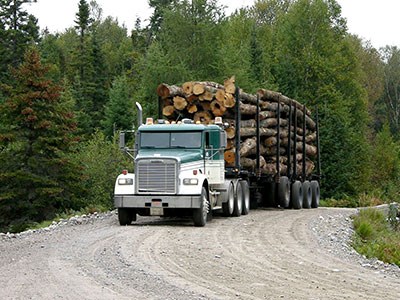Three years after the Ontario government created a new local forest management corporation (LFMC) on the north shore of Lake Superior, the Crown agency is still rounding into form.
The Nawiinginokiima Forest Management Corporation was established in the spring of 2011 to be the first pilot project established under the province’s overhauled forest tenure system.
It will deliver a measure of local control with this community-based agency that will be able negotiate, market and oversee the sale of Crown wood.
LFMC chairman Daryl Skworchinski, who participated in drafting the organization’s business plan in 2008, admits the roll-out isn’t happening as fast as he would like.
“I’ll be completely honest and blunt about that. But we think we’ve come up with a formula and model that the Ministry of Natural Resources (MNR) can use across the province.”
Over the winter, the corporation was recruiting senior managers and forest technicians to be housed in refurbished offices at the old travel information centre in Marathon.
Former Terrace Bay CAO Carmelo Notarbartolo was named general manager and John MacGillivray, formerly of KBM Resources Group, was named chief financial officer.
Both will reside in Thunder Bay, which shouldn’t hinder their job performance, said Skworchinski.
It’s been a challenge to convince qualified people to move to Marathon, located halfway between Thunder Bay and Sault Ste. Marie, he said.
“We decided as a board, if we found the right people that had the right fit for the organization that issues such as geography and distance, with today’s technology, weren’t going to hold us back.”
With almost 3,000 square kilometres of Crown forest to oversee, travel is part of the job anyway, he added.
Nawiinginokiima, an Ojibway word meaning “working together,” covers a 1.9-million hectare area comprised of four management units of the Big Pic, Pic River, White River and Nagagami Forests.
The land base contains an available harvest volume of 2.2 million cubic metres of merchantable wood annually, and about 430,000 cubic metres of biomass fibre.
On the agency’s to-do list for 2014 is acquiring formal control of those units since the LFMC is still waiting for the official transfer documents from the province.
When harvesting starts up under the LFMC, a good chunk of the corporation’s revenue will be generated through the collection of stumpage fees.
Most of that money will be plowed back into local training programs, building First Nation capacity, and FSC (Forest Stewardship Council) certification programs.
There will also be competition for wood as the industry starts to rebound.
Five area mills – White River Forest Products, Haavaldsrud Timber, Lecours Lumber, Lecours Lumber and AV Terrace Bay – consume 80 to 90 per cent of the fibre on the land base, mostly spruce, pine and fir.
What’s left over to put on the open market is “not going to be a tremendous amount,” said Skworchinski. But there will be opportunities for new value-added entrants to use mill residuals or underutilized species.
The beauty of the land base is that all the mills evenly spread out.
“The closest wood from one mill is the farthest wood from another mill,” said Skworchinski. “We should be able to realign the fibre flows and get the right wood to the right mill at the lowest possible cost.”
Keeping fibre costs as low as possible is a driving force behind the LFMC, but there are some uncontrollable costs such as diesel fuel prices.
There are also government policy issues that factor into the equation, he said.
“That’s why it’s so problematic when we hear that roads funding is being decreased so drastically.”
The Wynne government plans to make a 24 per cent cut to the Crown forest roads funding program, a move that many in the industry say will impact the cost of accessing and moving fibre.
“It creates a hardship,” said Skworchinsk. “You have to sit with your corporate partners and say look at dollars we have and ask, what’s the most economical fibre we have?
“It’s not a showstopper but it’s going to change the way that we originally envisioned the way we do business.”
Though the corporation is governed by the Crown Forest Sustainability Act, it is important to many area stakeholders to achieve a measure of autonomy to make local decisions on forest management and on how wood is distributed.
“We’re close to being there,” said Skworchinski. “We weren’t naive enough to believe that we’d have trust or support from industry and organizations, but I think we’re building that.
“It’s coming and people realize that the corporation was created for the reasons of sustainable economic development and proper management of our forests.”


.jpg;w=120;h=80;mode=crop)

